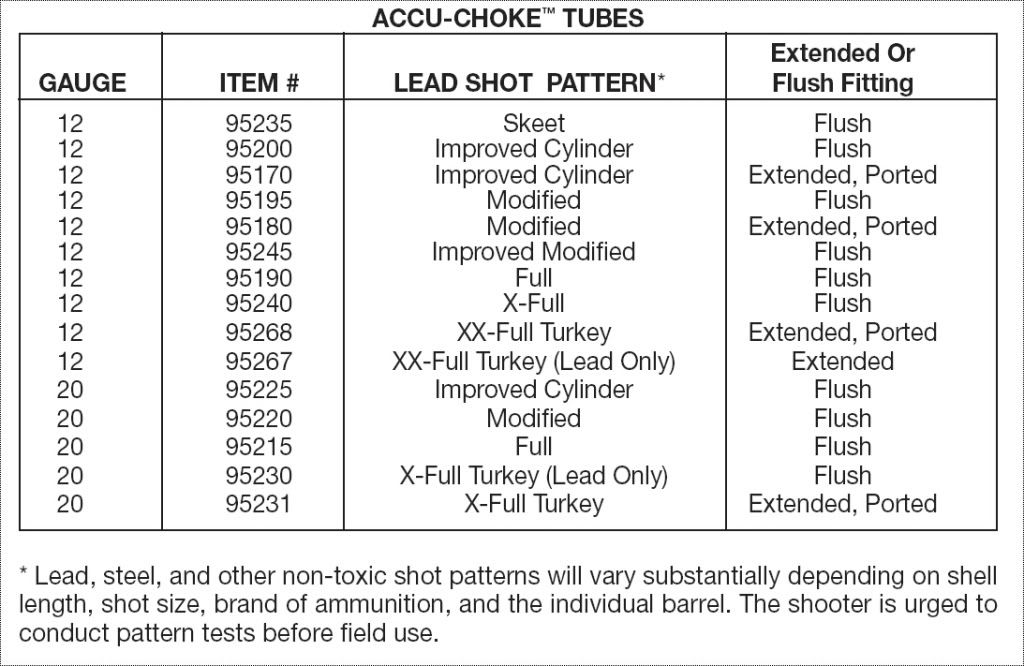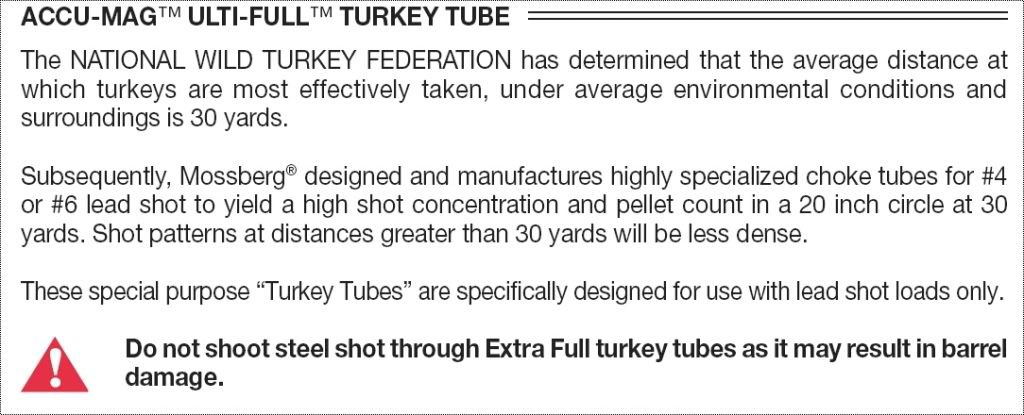-
If you enjoy the forum please consider supporting it by signing up for a NES Membership The benefits pay for the membership many times over.
You are using an out of date browser. It may not display this or other websites correctly.
You should upgrade or use an alternative browser.
You should upgrade or use an alternative browser.
Steel shot in my shotgun
- Thread starter pdm
- Start date
- Joined
- May 17, 2008
- Messages
- 16,975
- Likes
- 2,820
So I just picked up a Remington Sportsman 48, how bad is it for the barrel to run steel shot through it? Will it blow the sucker apart or just wear it down sooner than lead?
http://homestudy.ihea.com/ammo/12shell.htm
Notice the wad. It contains the bird/buck shot on it's way down the tube. You generally never get metal to metal contact so the barrel is usually not ever affected. Steel may not be as giving in choked circumstances (the choke squeezes the wad on it's way out the barrel) but I don't know that for sure one way or the other.
I think the final answer for you on this would be in the manual for your particular shotgun.
The manual for the Mossberg 500, 505, 535, 590 and 835 contains the following choke chart with comments on non-toxic shot:

They do also publish a specific warning regarding a specific choke as follows:

Bottom line, different wear and a different shot pattern is expected but the steel shot is only taboo in very specific documented situations.
The manual for the Mossberg 500, 505, 535, 590 and 835 contains the following choke chart with comments on non-toxic shot:

They do also publish a specific warning regarding a specific choke as follows:

Bottom line, different wear and a different shot pattern is expected but the steel shot is only taboo in very specific documented situations.
I have shot @ Riverside and (great group of people at the sunday morning shoots) and they told me Do Not shoot steel in a full choke, otherwise you were good to go. The wad will not compress enough and you will ruin your barrel.
pdm
NES Member
I would stay away from steel if the barrel is choked full. You could split the barrel but I have a friend who shoots steel through his M12 Winchesters and has never had an incident.
How do I determine the choke, as I don't think this has a removable one. I've looked on the barrel for marks, and the only thing I think that can relate to it is a stamp that says "MOD" on the left side.
There's no manual for this, last time it was made was back in the 60s. I don't think they even shot steel back then.
Joe G
NES Member
Mod to me would imply a Modified choke. I don't know any single barrel shotguns that have a fixed full choke. But I'm not an expert and didn't spend the night at a Holiday Inn Express.
Last edited:
pdm
NES Member
Mod to me would imply a Modified choke. I don't know any single barrel shotguns that have a fixed full choke. But I'm not an expert and didn't spend the night at a Holiday Inn Express.
ROFL.
![Wink [wink] [wink]](/xen/styles/default/xenforo/smilies.vb/002.gif)
Some poking about the Remington website tells me they don't want people shooting their "Hevi-shot" (I'm presuming that's steel?) in barrels older than 1950. Since the M48 was produced 1948-1968, I should be okay. Based on the serial number, I'm guessing my particular shotgun was made in the late 50s, early sixties.
Mod to me would imply a Modified choke. I don't know any single barrel shotguns that have a fixed full choke. But I'm not an expert and didn't spend the night at a Holiday Inn Express.
Lots of older sporting and trap guns are full choke. Look in a rack of old M12's most will be full choke. 3 of mine are fixed full choke, dates of manufacture are: 1927, 1938, 1957.
Joe G
NES Member
Lots of older sporting and trap guns are full choke. Look in a rack of old M12's most will be full choke. 3 of mine are fixed full choke, dates of manufacture are: 1927, 1938, 1957.
I knew there was a reason why I threw in that caveat.
![Grin [grin] [grin]](/xen/styles/default/xenforo/smilies.vb/041.gif) The ones I've used/owned were always modified or improved. But the sample set is much smaller than I'd like it to be...
The ones I've used/owned were always modified or improved. But the sample set is much smaller than I'd like it to be...Chris
NES Member
- Joined
- May 24, 2005
- Messages
- 13,382
- Likes
- 8,209
For the same pattern in steel shot that you get in lead, you will want to open your choke roughly one standard larger or 0.010" larger opening.
For some basic shotgun data, see my Shotgun Data page: Shotgun Data
For some basic shotgun data, see my Shotgun Data page: Shotgun Data
pdm
NES Member
For the same pattern in steel shot that you get in lead, you will want to open your choke roughly one standard larger or 0.010" larger opening.
For some basic shotgun data, see my Shotgun Data page: Shotgun Data
And if it's a fixed choke, I can just expect the pattern to widen? As in my modified fixed choke will act like an improved cylinder?
And if it's a fixed choke, I can just expect the pattern to widen? As in my modified fixed choke will act like an improved cylinder?
No, he means that steel shot throws a tighter pattern than lead for equivalent choke constriction, i.e., a barrel marked "modified" will tend to shoot something more like a full choke pattern with steel. This happens in large part because the steel pellets don't deform, so fly truer because they remain as perfect spheres. You should also be aware that many shotgun barrels don't pattern as marked and the pattern can vary with shot size. If you're a serious shotgunner there's no substitute for getting a roll of wide paper and spending an afternoon doing some patterning studies.
pdm
NES Member
No, he means that steel shot throws a tighter pattern than lead for equivalent choke constriction, i.e., a barrel marked "modified" will tend to shoot something more like a full choke pattern with steel. This happens in large part because the steel pellets don't deform, so fly truer because they remain as perfect spheres. You should also be aware that many shotgun barrels don't pattern as marked and the pattern can vary with shot size. If you're a serious shotgunner there's no substitute for getting a roll of wide paper and spending an afternoon doing some patterning studies.
Ahh, okay. That actually works better for me, I think. With the 7.5 lead shot I have, I was getting a pretty good spread at 50 yards. Tightening it up will only help me bust clays, I would think.
Ahh, okay. That actually works better for me, I think. With the 7.5 lead shot I have, I was getting a pretty good spread at 50 yards. Tightening it up will only help me bust clays, I would think.
The standard way of evaluating a pattern isn't in terms of maximum spread, but rather the percentage of shot in a 30" circle at 40 yards. Full choke is considered to be about 70%, and Cylinder (AKA Skeet #1) is about 30%, with the others ranging in-between (IC about 40%, Mod about 50%, etc.). The only way to tell for sure what choke you really have is to shoot the gun onto a piece of wide paper, draw a 30" circle around the densest part of the pattern, and start counting pellet holes. A real shotgun nut will also quarter the circle and count the quarters individually to check for evenness of pattern.
For skeet, where most shots are within 30 yards or so (sometimes 10 yards or less), an open choke is what you want, no more than IC. Trap, where the distances are greater, requires at least Mod, or more if you aren't getting on the birds quickly or shoot from the handicap lines. For casual clay target shooting, something in the middle is probably best, but I think a Mod barrel with steel (i.e., a functional full choke) is going to be too tight - it would be for me anyway. Full choke is really for the experts, IMHO.
pdm
NES Member
Good to know. Gotta learn something new every day or the day's wasted. I'll have to pick up a box of steel 7.5 shot and see how it goes. Most places that I've looked into require the steel shot when shooting trap/skeet, so I'm kinda hoping I didn't blow a wad of cash on a shotgun I can't use for that purpose. ![Wink [wink] [wink]](/xen/styles/default/xenforo/smilies.vb/002.gif)
![Wink [wink] [wink]](/xen/styles/default/xenforo/smilies.vb/002.gif)
Share:
Similar threads
- Replies
- 36
- Views
- 1K
- Replies
- 2
- Views
- 445
